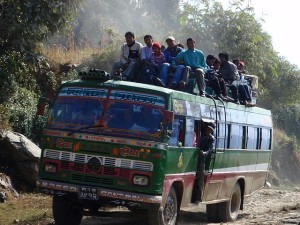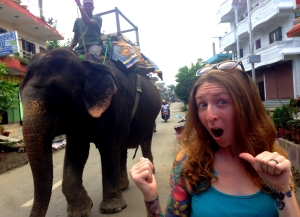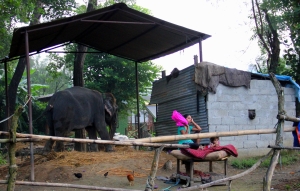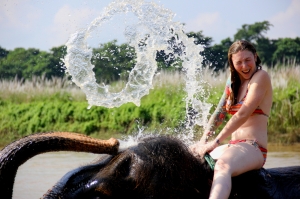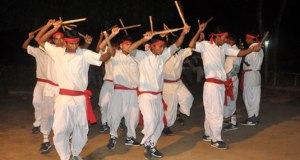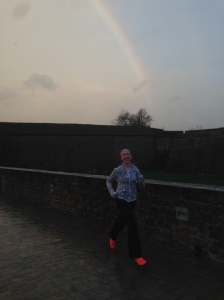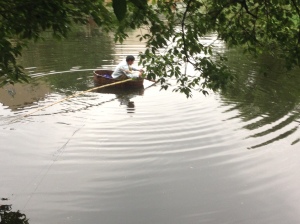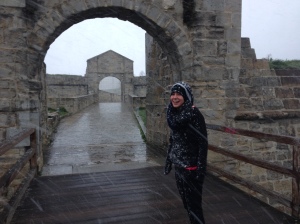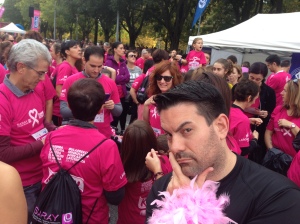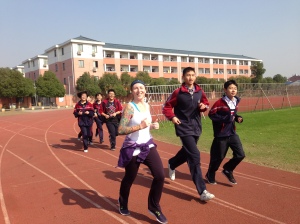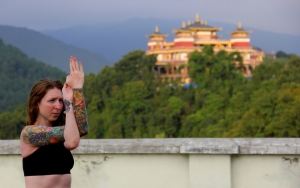Drums out in the wilds of the deepest jungles of central Asia! The beating will drive madness into the mind! Danger! Excitement! Wild beasts! And now, presenting a safari trekking excursion!
DAY 3
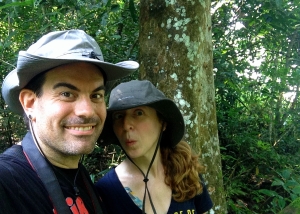
Our third day began with an early start. When we finished breakfast, we walked down to the river and got into a special kind of canoe, made by the hollowing out of a special type of tree trunk. The canoe held about ten people and slowly made its way downstream to the entrance of the jungle. Along the way we saw plenty of waterfowl including egrets, cranes, and smaller, more colorful birds, and even a few crocodiles near the banks. I was worried the boat would tip too far to the left and start taking in water, but magically, it never did. We arrived at our destination dry as bones. Now it was time for our jungle trek.
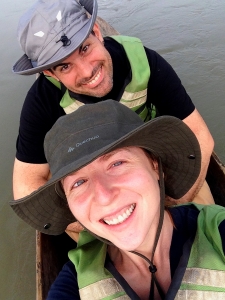
The guide gave us his spiel about what to do if we encountered some of the area’s more dangerous critters: sloth bears, rhinos, and tigers (fun fact: did you know that you’re supposed to stare down a tiger if he comes across you, looking fierce, making funny faces, and loud noises while waving your arms at him? Truthfully, the last thing you want to do when facing a tiger is turn tail and run away). Rhinos have bad eyesight so if they charge at you, you’re supposed to run in a zigzag pattern and possibly either hide behind or climb up a tree.
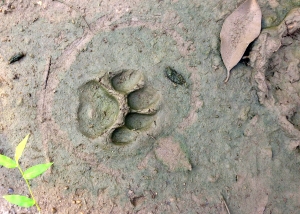
So we hiked through the dense vegetation of the rain forest and the adjacent grasslands with 12 foot high grasses (which made visibility negligible) and didn’t encounter anything dangerous. We saw lots of brightly colored insects and birds, a few monkeys, a flock of spotted deer, and tiger tracks (we even heard one barking in the distance), but we didn’t see any. I thought I saw the back half of a panther, jaguar, or some other type of smaller jungle cat, but it disappeared before our guide could identify it. What we did see was big piles of animal stool, like sloth bears and rhinos. It was like we were tracking the beasts and our guide could tell us how recently the animals had been in the very spot we were standing. Too bad they had vacated the premises before our arrival.
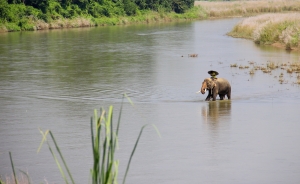
Three hours later, we were sitting on a raised platform under the shade of a tree overlooking the river, watching an elephant cross the water. We hadn’t seen any rhinos yet, so our guide promised to take us out the next morning to a spot on the river where he knew they would be so that we could see them. All in all, our jungle safari trek was fun, but uneventful. At one point Jen had a leech on her pants, which came off easily with one small tug, but otherwise not much else happened. We returned to the town for showers, more a/c card games, and dinner.
DAY 4
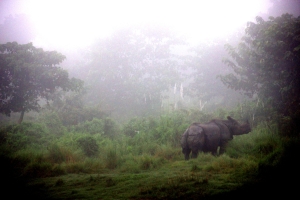
Our fourth day started with a bang. RHINOS! We hiked to the river and saw two of them, one in the water taking his own bath and another up on the bank eating some grass (they’re herbivores). They are truly amazing creatures that made me feel as if I were in Jurassic Park. They really do resemble dinosaurs with the horn and armor plating. The rhino in the river crossed paths with a wild elephant too. They were really awesome to see.
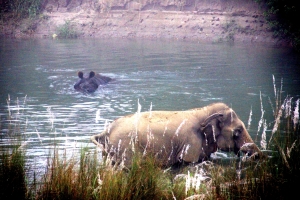
After the rhinos, Jen wanted to bathe with the elephants again since it was our main reason for coming to the area and she had so much fun the first time. So she did that again, this time she spent close to 45 minutes scrubbing down a twenty-five year old girl named Elisa (or Eliza), who had walked for five days across India just to get into Nepal with her teenage owner and his five year old little brother. Both Jen and the elephant were all smiles that day and I got some great pics, so I was all smiles too.
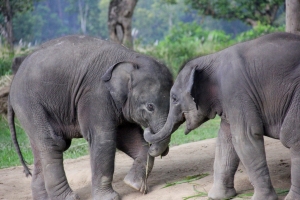
Following more showers, we took a quick motorcycle ride to the Elephant Breeding Center, where baby elephants run around amok. We arrived just as they finished their grazing in the forest and were coming back for feeding time. We both got to play with and touch them (something you could never do in the States); one of the younger ones was running around the entire place looking for something sweet to eat, barreling toward the tourists, who jumped out of her way.
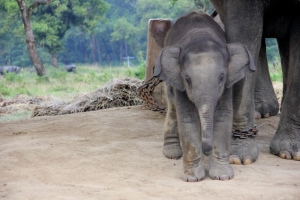
Their mothers are chained up while the babies roam free so that when they’re playing with tourists, the mothers don’t stampede or do anything else dangerous. We finished up just as the rain started coming down so we went back to town to wait out the rain and then head around for some souvenir shopping and more dinner at KCs.
When dinner was over we took a walk along the river, saw some more crocodiles and tried to see the sunset, but because it was cloudy we only got more changing, shifting colors and didn’t ever really get a chance to see the brilliant ball of gas slipping lower behind the horizon. That night was awful because the electricity never came back on and we had to sleep in a muggy, bug-infested room (the screens had holes) and I barely slept a wink. It was awful, especially knowing what followed the next morning: another horrible, terrible, no good, very bad bus ride back up to Kathmandu (we found out the hard way that this time took 8 hours, not 6 because of muddy roads and traffic).
All in all, we had a great adventure in the jungles of Nepal. As always, the people are marvelous and well worth visiting. They really seem to care about going above and beyond to ensure you’re enjoying yourself. If you can stomach the bus ride, and have a few extra days, Chitwan National Park is worth it in spite of not ever getting the guarantee of seeing animals on your jungle trek. We recommend it!
Until Next Time…
-Justin
